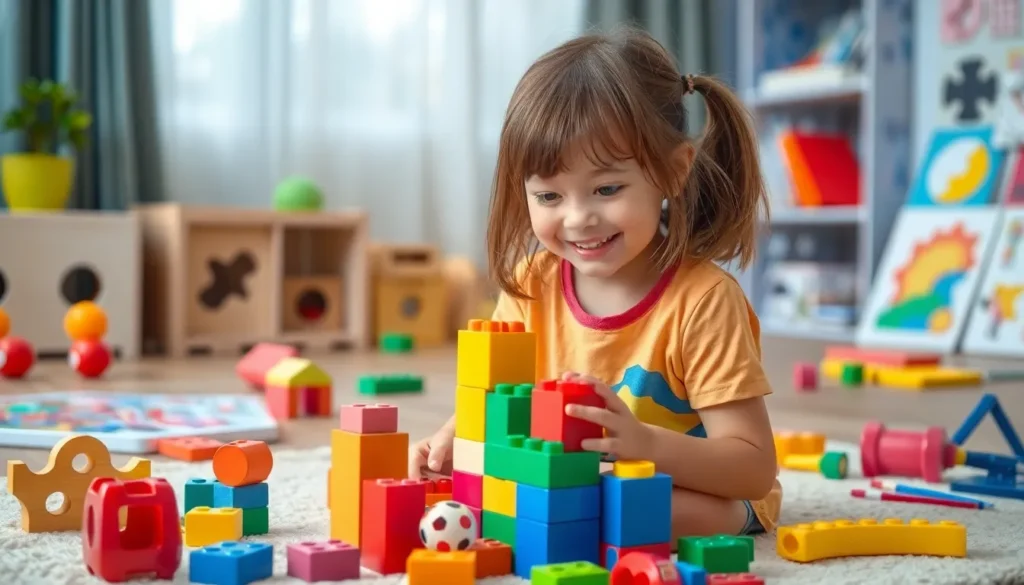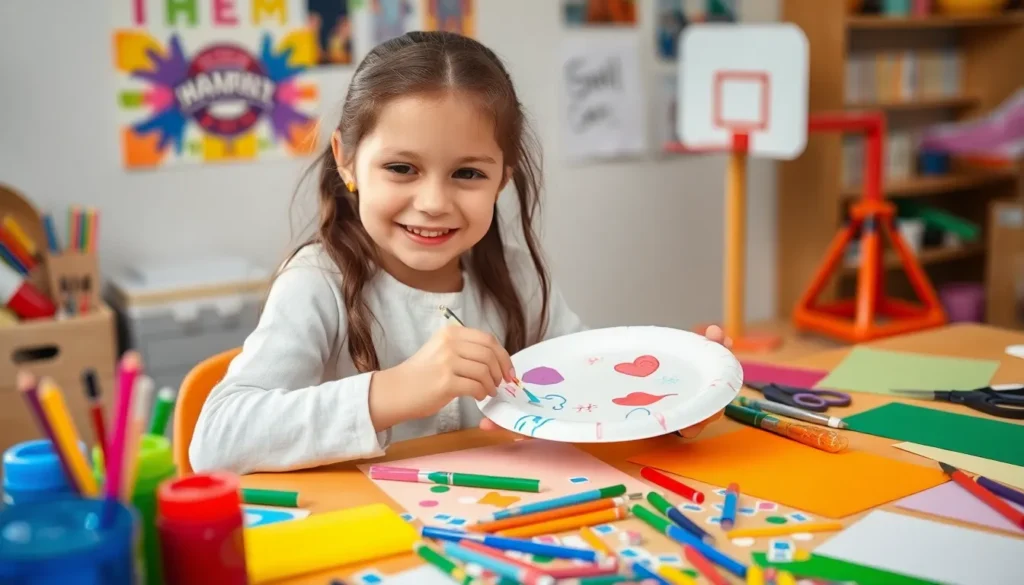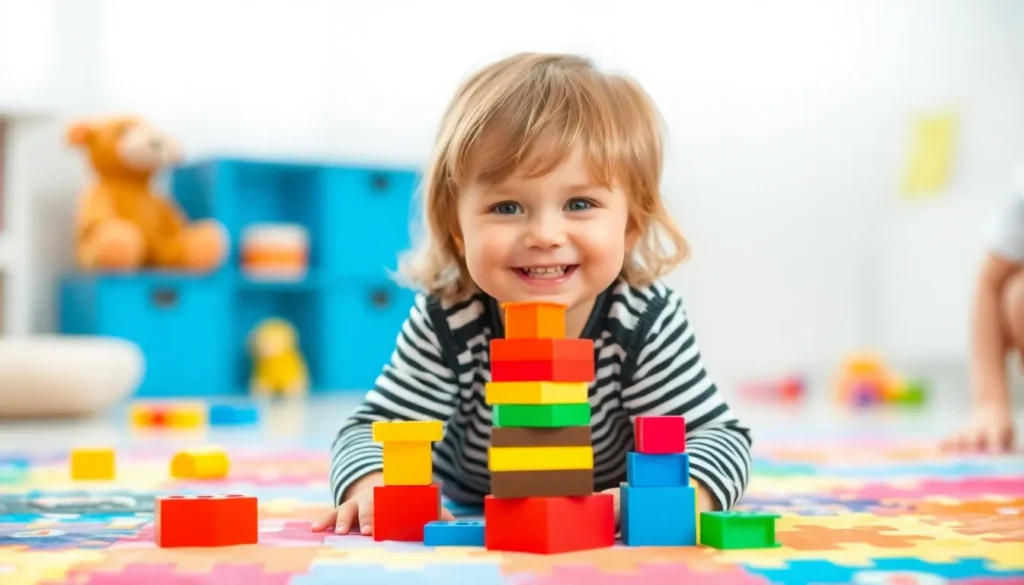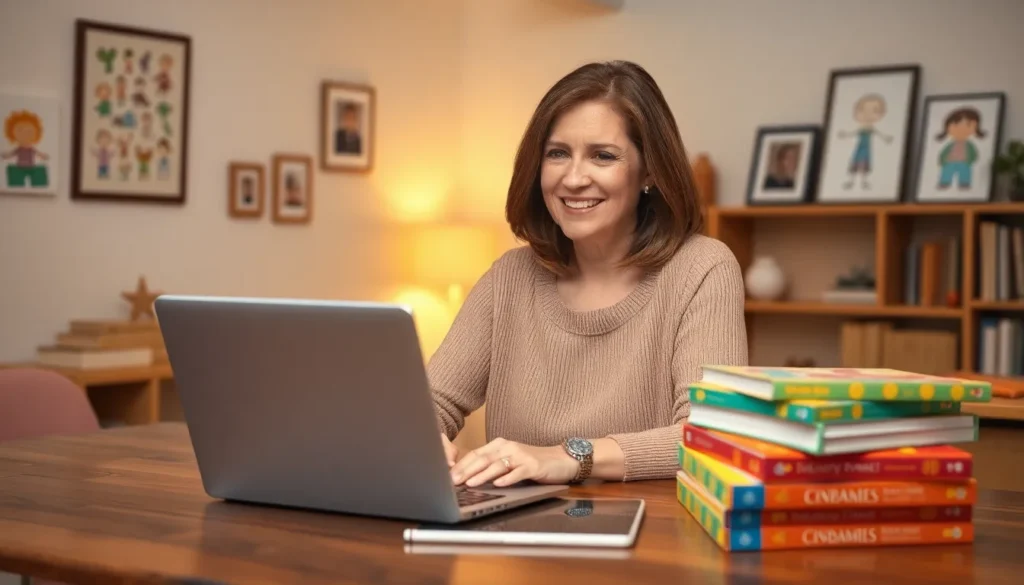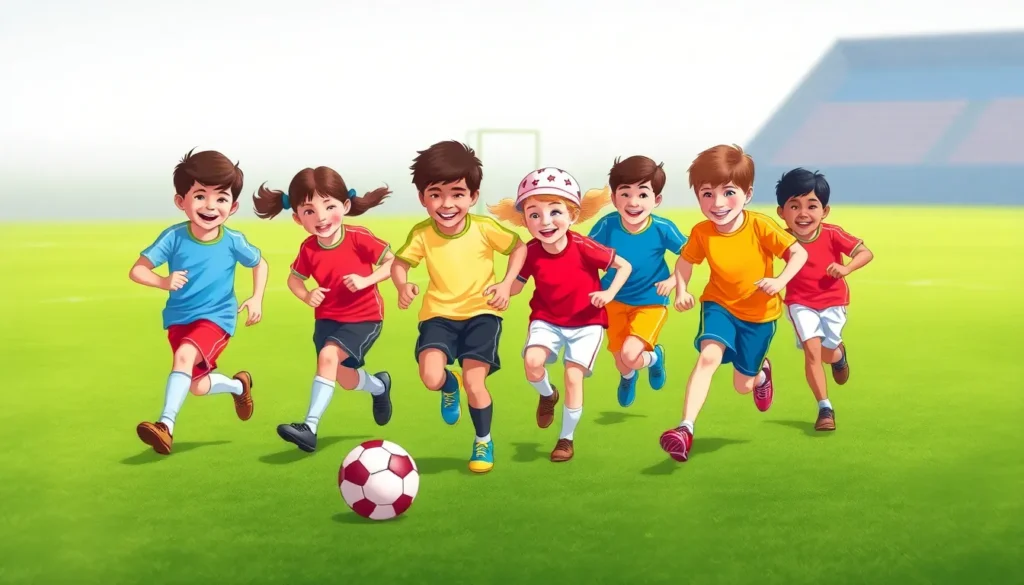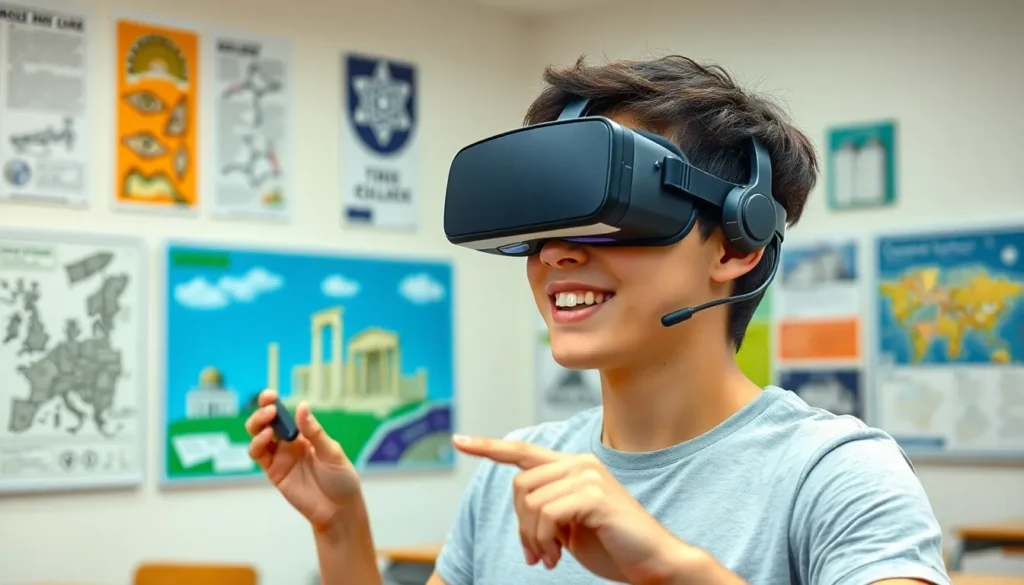At one year old, a child’s world is a whirlwind of discovery and wonder. Every crinkle, rattle, and squeak holds the potential for learning, and choosing the right educational toys can make all the difference. After all, who knew that a simple block could unlock the mysteries of shapes, colors, and even gravity?
Table of Contents
ToggleOverview of Educational Toys for 1 Year Olds
Educational toys for one-year-olds play a vital role in fostering early development. These toys stimulate sensory exploration by engaging sight, sound, and touch. Various options exist, including stacking blocks, shape sorters, and musical instruments, which promote critical thinking and fine motor skills.
Stacking blocks serve as a foundational tool for understanding spatial relationships. Children learn to balance while also recognizing shapes and colors. Shape sorters encourage problem-solving abilities, requiring little ones to identify and match shapes with corresponding openings.
Musical instruments, like rattles and drums, aid auditory development. They introduce rhythm and cause-and-effect principles effectively. Children experience immediate gratification when sounds occur following their actions.
Interactive books with textures or flaps enhance cognitive skills. These books promote engagement and language development by encouraging storytelling and word recognition.
Soft toys and plush animals also hold educational value. They support emotional development, allowing children to practice empathy and nurturing behaviors.
Educational toys contribute significantly to social interaction. Group play encourages sharing and communication, laying the groundwork for future relationships.
Safety remains a priority when choosing toys; items must be age-appropriate and free from choking hazards. It’s essential to check for non-toxic materials to ensure a safe play environment.
Overall, selecting diverse educational toys can enrich a child’s developmental journey at this crucial age. Each toy offers unique advantages, making careful consideration essential for optimal growth and learning.
Benefits of Educational Toys
Educational toys present numerous advantages for one-year-old children. They support various aspects of development, making selection crucial during this formative stage.
Cognitive Development
Cognitive development benefits significantly from educational toys. These toys stimulate curiosity and promote problem-solving skills that facilitate learning. For example, shape sorters enhance recognition of different shapes while encouraging matching skills. Simple puzzles also help with understanding cause and effect, reinforcing logical reasoning. Interactive books foster language skills and boost comprehension through storytelling. Engaging with these toys helps children process information and enhance memory retention. Regular exposure to educational toys helps build a strong foundation for future cognitive growth.
Motor Skills Improvement
Motor skills improvement occurs through active play with educational toys. Stacking blocks encourage hand-eye coordination and dexterity as children grasp and place each piece. Several toys, like musical instruments, enhance fine motor skills while also introducing rhythm. Shape sorters require precise movements that further strengthen hand control. Additionally, soft toys often involve actions such as squeezing and holding, which improve grip strength. Repeated interactions with these toys promote the development of essential gross and fine motor skills necessary for everyday activities.
Types of Educational Toys for 1 Year Olds
Educational toys for one-year-olds come in various forms, each promoting different areas of development. Parents can choose from musical toys, building blocks, and interactive learning toys to support their child’s growth.
Musical Toys
Musical toys stimulate auditory development and introduce rhythm. Instruments such as maracas and drums engage young children, allowing them to explore sound and music. They promote hand-eye coordination through play as children shake, tap, or strike the instruments. Parents often notice that these toys enhance a child’s understanding of cause and effect; when they play an instrument, they produce sound. Some musical toys feature lights or buttons, providing visual stimulation alongside auditory experiences. This combination captivates attention and encourages movement, fostering gross motor skills.
Building Blocks
Building blocks are essential for developing fine motor skills and spatial awareness. Children can stack, balance, and arrange blocks, providing hands-on experience with concepts such as balance and gravity. Variety exists in materials, from soft foam to classic wooden blocks, catering to different preferences and safety needs. Engaging with building blocks also encourages problem-solving; children learn to figure out how to construct stable structures. As children play, parents can facilitate conversations about colors, shapes, and sizes, further enriching the learning experience.
Interactive Learning Toys
Interactive learning toys engage one-year-olds with features like buttons, lights, and sounds. These toys encourage exploration, inviting children to press, pull, or twist components. Through interactive play, cognitive skills develop as children begin to associate actions with outcomes. Popular choices include activity centers and toys that promote language skills through words and melodies. Safety considerations remain a priority; these toys should be age-appropriate and made from non-toxic materials. As children interact with these learning toys, they enhance their problem-solving abilities and stimulate curiosity about their surroundings.
Tips for Choosing the Right Educational Toy
Selecting the appropriate educational toy significantly impacts a child’s development. Considerations should be made for both safety and age appropriateness to ensure a positive play experience.
Safety Considerations
Safety ranks as a top priority when choosing toys. Look for items free from small parts to prevent choking hazards. Non-toxic materials are essential, especially since children explore through mouthing. Toys should meet safety standards set by organizations such as the Consumer Product Safety Commission. Regularly inspect toys for wear and tear to ensure continued safety during play. Moreover, avoid toys with sharp edges or small detachable pieces. Opt for those made specifically for toddlers, as they are designed with safety features that suit younger children.
Age Appropriateness
Age appropriateness greatly influences learning through play. Toys designed for one-year-olds should align with their developmental milestones. Select toys that match their cognitive and motor skill levels to promote engagement. For instance, simple shape sorters and stacking blocks serve to enhance their understanding of spatial relationships while encouraging problem-solving. Puzzles with large pieces support fine motor skills and hand-eye coordination. The right toys stimulate curiosity and foster exploration. While seeking educational toys, consult age recommendations on packaging for guidance in making suitable choices tailored to a child’s growth stage.
Choosing the right educational toys for one-year-olds can significantly impact their early development. These toys not only stimulate curiosity and creativity but also promote essential skills such as problem-solving and motor coordination. By engaging with building blocks, musical instruments, and interactive toys, children can explore their world while developing cognitive and social abilities.
Parents and caregivers should prioritize safety and age-appropriateness when selecting toys. A diverse range of educational toys can enrich a child’s learning experience, laying a solid foundation for future growth. Investing in quality educational toys is a step toward nurturing a child’s potential and fostering a lifelong love of learning.


